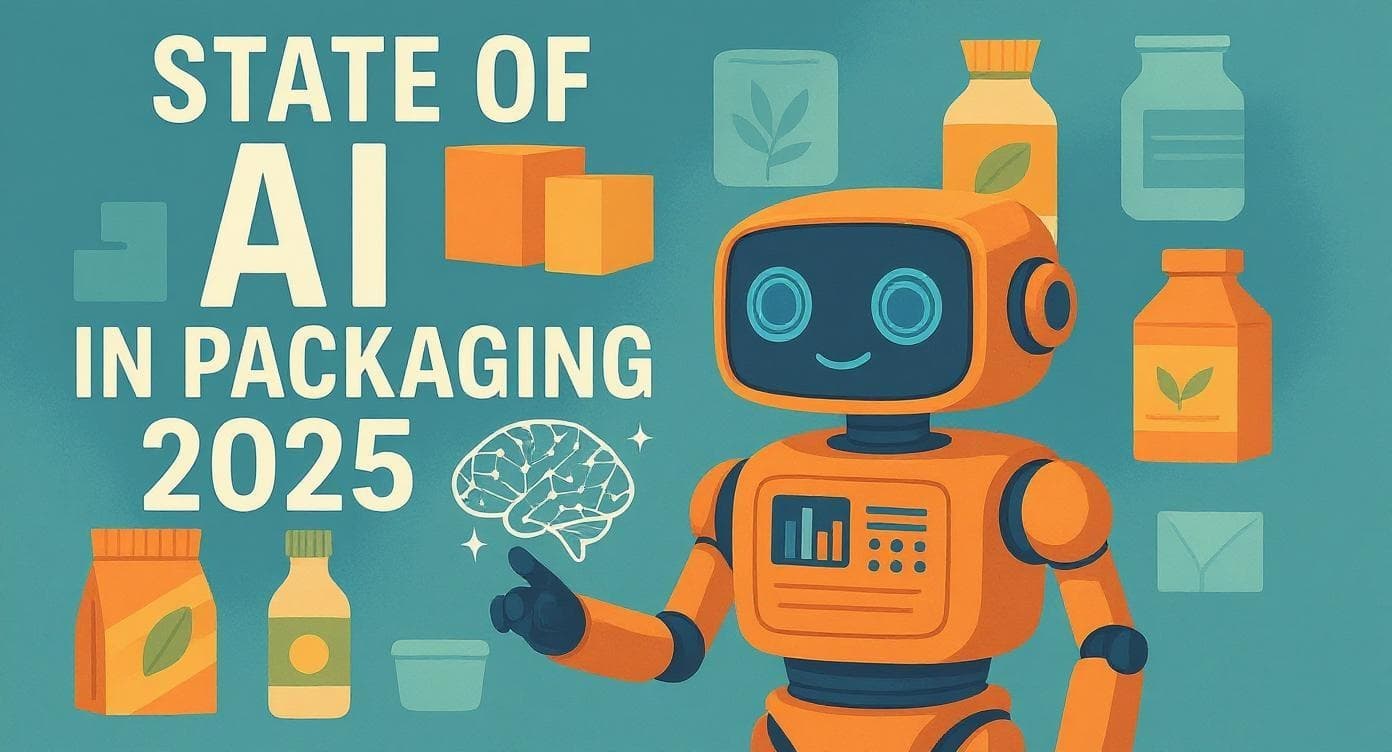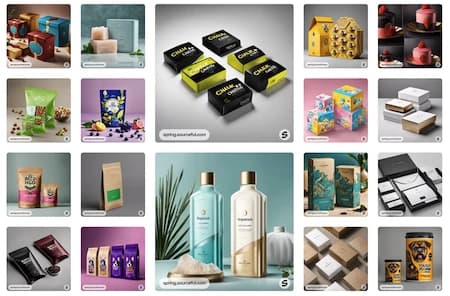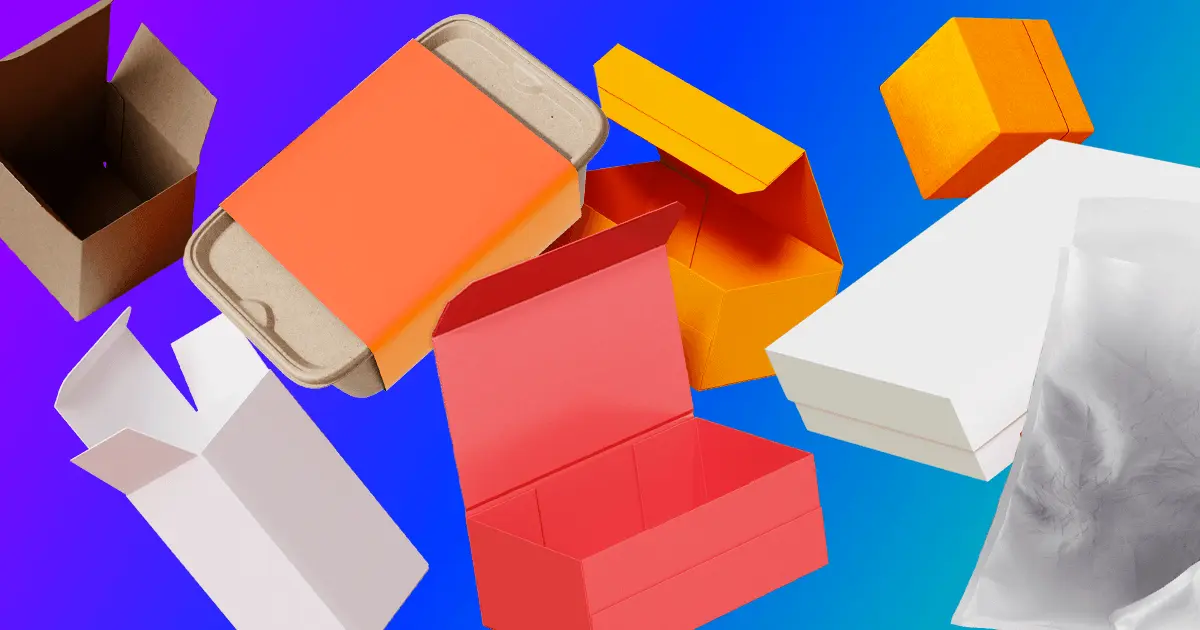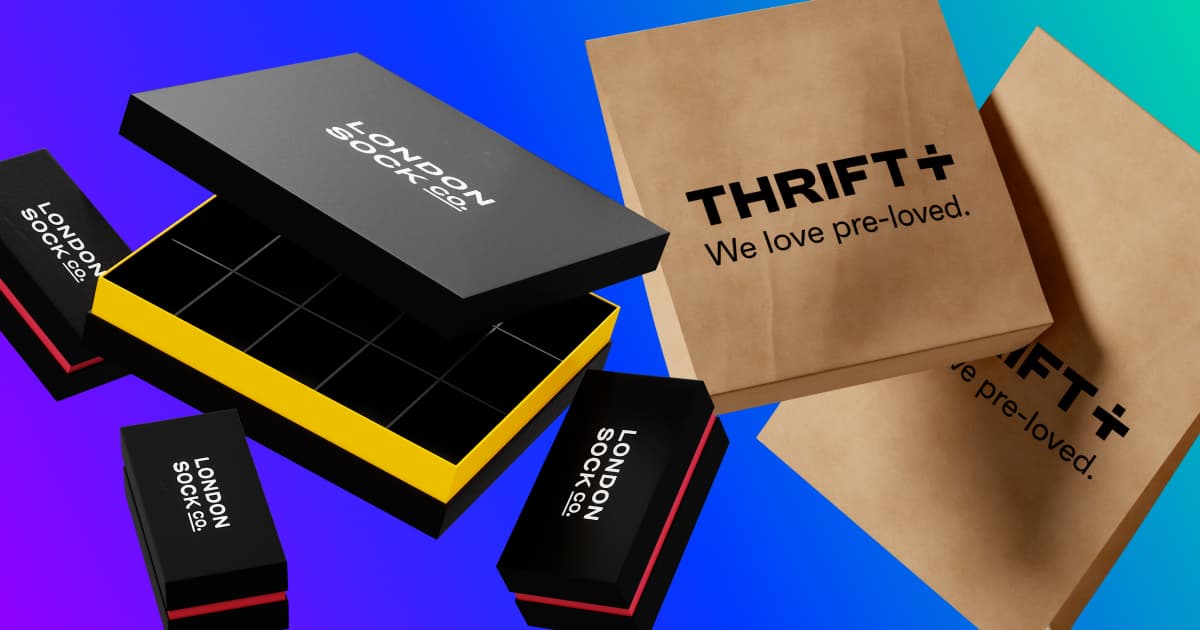Blog Post5 benefits of paper packaging (and 3 cons)
- Sustainability
- Materials
Rachel LawtonJune 6, 2023 - 7 min read
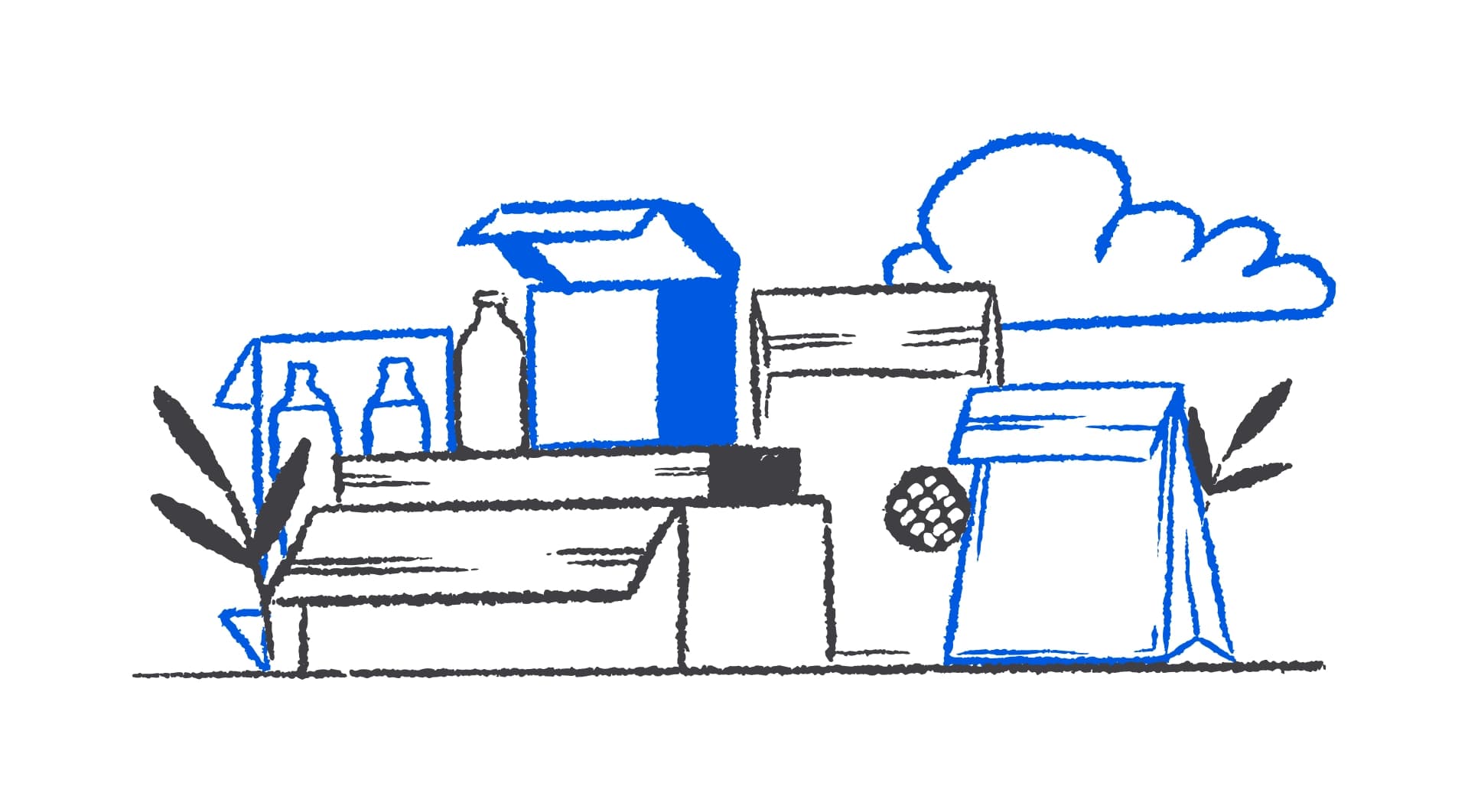
Paper is a packaging material that’s stood the test of time. Although it might not be the most novel, its versatility means it’s still one of the most exciting packaging materials to work with.
With every colour, shape and size imaginable, it’s a great way to make your brand stand out. And, when sourced and manufactured responsibly, paper can offer an alternative to less sustainable options like plastic.
That being said, paper isn’t without its limitations. Knowing these can help you choose the most suitable paper packaging for your product, without compromising on protection.
Benefits of paper for packaging
- Recyclability
- Affordability
- Versatility
- Responsible sourcing
- Consumer preference
1. Recyclability
Compared to other packaging materials, paper is highly recyclable. In the UK alone, 74% of paper is recycled compared to just 6% of flexible plastic and 44% of total plastic waste.
That’s because recycling paper is pretty easy. It doesn’t need to be sorted into specific sub-materials and is all processed into the same pulp. Then, it’s dried to the desired thickness and rolled onto large sheets, ready to be made into new products. High temperatures or specialised processes aren’t needed. So the process is easier and less energy intensive than recycling plastic or metal.
And because it’s so widely recycled, less of it gets sent to landfills compared to other packaging materials. That’s good because when degradable packaging waste breaks down in landfills, it releases methane — a greenhouse gas that accelerates climate change. So, by choosing recyclable paper packaging, you’re helping to reduce methane emissions compared to the alternatives.
Paper can also be recycled several times before losing its quality, so your packaging can contain lots of recycled content. This means you use fewer virgin materials, which reduces the pressure on forests.
2. Affordability
The paper industry is well-established, with a long history going back centuries. Because of this, paper comes at an affordable cost compared to newer and more novel materials which often cost more but offer no extra value.
So, paper is widely available and reliable. But it's also easy (and cheap) to customise. You can create all kinds of shapes and forms, helping you optimise storage and shipping space. This creates further cost savings as you’re able to ship more products in one go.
In fact, flower delivery business Floom did just that. With Sourceful's help, they switched from an ill-fitting standard sized box to two new bespoke ones which reduced their packaging costs by 15%.
And if you reduce your packaging size, as you can easily do with our custom-sized mailer boxes, you can bring down your environmental impact by up to 12%.
3. Versatility
The beauty of paper is how easy it is to fold and cut into any shape and size. This means the freedom to create packaging that suits your product's unique needs. Whether you need a simple box, an intricately folded design or a unique shape that reflects your brand identity, paper can deliver.
And it's not just about aesthetics. Paper can be produced for strength and protection too. Think about the familiar corrugated cardboard box. That wavy sheet in between the box’s walls is called the fluting and it comes in different sizes. So you can choose the exact level of strength your packaging needs, without wasting materials (or money).
Paper is also versatile enough to replace other common but less sustainable packaging. For example, our honeycomb mailer is inspired by one of the strongest, most efficient structures in nature — the honeycomb. Its latticed configuration makes it resistant to light impact, so you can wave goodbye to plastic bubble wrap and air pillows.
4. Responsible sourcing
Forests support life, act as carbon storage and are key to mitigating climate change. And responsible forest management has positive social effects as well as environmental ones. For starters, it creates jobs and income for local communities. And it can help to preserve cultural values and traditions too.
When you source paper from responsibly managed forests, you’re supporting these communities, as well as more sustainable supply chains. So, look for certifications like the Forest Stewardship Council (FSC) or the Programme for the Endorsement of Forest Certification (PEFC). These organisations aim to guarantee that the paper you’re using is sourced under responsible practices.
The icing on the cake is being able to add an FSC label to your packaging. This helps you showcase your commitment to sustainability and stand out amongst your competitors.
Electronics retailer HP is a great example of this. As a printing specialist, HP’s products centre around paper use. So, the company works with NGOs such as the World Wildlife Fund to protect and restore forests. Not only is this a positive step by HP, but by promoting this collaboration they also showcase their values to climate-conscious consumers. In turn, they build brand loyalty.
5. Consumer preference
Consumers are increasingly aware of the environmental impact of their purchases. To them, sustainability is becoming just as important as cost and quality.
And paper is widely recognised as a more environmentally friendly material. So using it in your packaging sends a powerful message to climate-conscious consumers. It shows that your brand is committed to sustainability and that you're taking tangible steps to reduce your footprint. It also means you can stand out against competitors that are lagging behind.
“For packaging substrates, some 57 to 60 percent of US consumers rank glass, paperboard, and paper as extremely or very sustainable” — David Feber, Anna Granskog, Oskar Lingqvist, and Daniel Nordigården, McKinsey
What about the cons of using paper packaging?
Whilst paper packaging has a long list of benefits, you also need to be aware of its limitations. If it doesn’t do what you need it to, you could end up with damaged products, more returns and a damaged reputation.
But don’t be alarmed. Because when you know what paper’s weaknesses are, you can plan for them and even turn them into strengths.
Cons of paper
1. Lower barrier properties
If you’ve ever spilled a glass of water on an important document, you’ll know that paper is not waterproof. Because unlike materials like plastic, paper allows water and air to flow through it. And when wet, it can become weakened or even disintegrate. This becomes even more of a risk if you’re shipping over long distances or humid regions.
But don’t go reaching for the plastic wrap just yet. Although paper packaging might not survive a soak in the bathtub, you can find plenty of splashproof options, like our paper mailer bag. Splashproof packaging is often more than enough protection to get your product from A to B, and your customer can still recycle the packaging once it arrives.
There are also some exciting new products coming to market. Like our HydroTec Paper Pouch that’s ideal for food products, keeping them fresh for up to 18 months (though we find we’ve usually eaten up the contents long before that).
2. Added synthetic components
Paper isn’t moisture or oil-resistant. So synthetic components like PFAS (perfluoroalkyl and polyfluoroalkyl substances) are sometimes used to make paper packaging more durable.
But PFAS (known more commonly as forever chemicals) hang around in the environment and build up in the food chain over time. And they’ve been linked to some major health issues. But they’re not the only problem, as the bleach and dyes used in paper production can also be toxic.
So how can you avoid these chemicals? For starters, reduce your use of bleached paper and opt for natural kraft instead. This can work in your favour as many customers prefer kraft paper for its unprocessed appearance!
You can also use natural inks instead of solvent-based or plasticised UV inks. And brands in the food industry should look for PFAS-free paper alternatives that offer moisture resistance without the toxicity.
Take it from us — your paper packaging can balance functionality, aesthetics, and environmental responsibility.
3. Energy efficiency
Manufacturing paper does require heat and electricity. This creates greenhouse gas emissions and other environmental impacts.
But players in the paper industry are working towards greater energy efficiency. Take the UPM Shotton paper mill in the UK, which operates on 100% solar energy during the daytime. That’s because renewables are now so widely-available and cost-effective against fossil fuels that switches like these simply make sense.
There are still some energy-related challenges associated with paper manufacturing. But the industry's commitment to improving energy efficiency is driving positive change. And you can support them by switching to more sustainable paper packaging.
How to choose the best paper packaging for your business
1. Consider your product
No matter how sustainable you want your packaging to be, it’s no use if it doesn’t protect your product. So, consider factors like moisture resistance, barrier properties and overall durability. Your product will be handled by countless people, so your packaging needs to withstand each human interaction.
You’ll also want to think about specific requirements that are unique to your product. For example, if you’re shipping delicate items like jewellery, your packaging needs to be highly protective. So, consider paper packaging with built-in padding like a honeycomb mailer. Or use a sturdy mailer box and custom inserts to take your protection to the next level.
Murphy’s law says if something can go wrong, it will. So when choosing any packaging — paper or otherwise — think about the journey your product will take and plan for any challenges. Then, run a few tests to ensure your paper packaging does what it’s meant to whilst travelling from A to B.
Once you know your packaging holds up, you can ship your products with confidence.
2. Let your creativity flow
Your packaging is more than just a protective shell. It’s an opportunity to showcase your brand's identity and stand out in a crowded market. And it’s often the first physical interaction your customers have with you, so a good impression is vital.
When choosing paper packaging, think about your target audience’s preferences. For example, if they value sustainability, look for more sustainable paper packaging options, like natural kraft paper instead of bleached paper. For younger customers, you might go bright and bold with water-based inks.
The good news is that whatever your idea, you can test it using our online studio, without any need for specialist help. When you think you’ve got a great design, ask your customers for feedback so you know what works and what to improve.
Remember that your paper packaging is an extension of your brand. So make sure its design reflects who you are and what your customers value.
3. Champion sustainability
Nothing is 100% sustainable (yet). So even though paper is one of the most sustainable packaging materials out there, you still need to make sure yours is responsibly sourced.
When choosing paper packaging, try to find products that use recycled content. This means using fewer virgin materials and reducing the pressure on forests. And if you do need to use virgin paper, look for certifications like Forest Stewardship Council (FSC).
You can also avoid manufacturers that use harmful chemicals and make sure your packaging can be recycled after use.
If environmental considerations like these make you feel out of your depth, that’s understandable. But getting reliable environmental data on your packaging doesn’t have to be difficult.
When you design your packaging with Sourceful, you get access to live carbon data. This shows you how every design choice you make can increase or decrease your packaging’s carbon footprint. With the guesswork removed, you can make decisions about your packaging design with confidence.
Get sustainable packaging with Sourceful
Paper is powerful. It's easy to recycle, it's affordable and it's versatile. And when responsibly sourced and manufactured, it can be one of the most sustainable packaging options available.
With unique paper packaging, you can embrace sustainability and still stand out in a crowded market. And that’s where we can help.
At Sourceful, we’re passionate about helping brands switch to more sustainable packaging, without sacrificing style or function.
We’re ready to help you unfold a world of paper packaging possibilities affordably and hassle-free.



